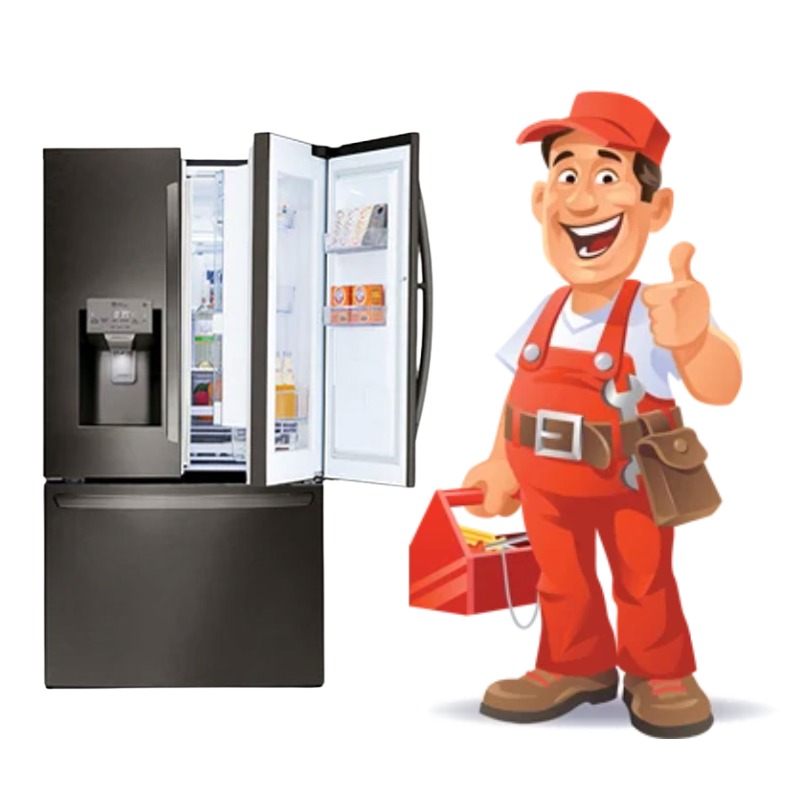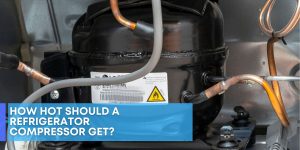If your fridge is not cooling or humming, it might be because of a broken compressor. A compressor is a vital part of the fridge and without it, food will not be kept cold. The first step in repairing a refrigerator compressor is to determine if it’s necessary at all. If the compressor is only making noise, it may just need to be replaced. However, if the compressor is not cooling or humming, there may be something else wrong with it that needs to be fixed.
The most common issue with compressors is that they can become clogged with dust or debris. This can prevent the motor from working properly and cause problems with the fridge’s freezing abilities. To fix this issue, you’ll need to take apart the compressor and clean everything out. You can use a vacuum cleaner and an anti-vibration pad to remove any debris. Make sure to replace any parts that are damaged as a result of the clogging.
Another common problem with compressors is age. They can start to wear down over time and lose their ability to cool or hum efficiently. In order to fix this issue, you’ll need to replace the compressor altogether. There are also special tools available that allow you to repair compressors without having to take them apart completely. These tools use heat and pressure instead of suction which makes them more reliable and less likely to wear down over time.
Repairing an ice maker
If your refrigerator is not chilling your food or giving you the coldest temperature it can, it may need repair. The most common issue with refrigerators is an ice maker. Here are some tips on how to repair an ice maker.
The first step is to ascertain the cause of the issue. If the ice maker isn’t making any ice, there may be a problem with the water line or filter. If the machine is only producing small amounts of ice, there could be a problem with the motor or control board. In either case, repairing these parts will usually solve the problem.
If you are unable to determine what is causing the issue, then you will need to take apart the refrigerator and inspect everything closely for damage or wear and tear. Once you have a general idea of what needs to be repaired, consult an expert for further advice and assistance.
Repairing a water line
If your refrigerator is not cooling or freezing properly, it may be because of a water line issue. A water line can become detached from the compressor and Thermostat in the refrigerator, causing the appliance to fail to operate. If you notice that water is leaking from your refrigerator, it is important to take action as soon as possible in order to avoid more damage and potential refrigerant leak.
In order to repair a water line issue on a refrigerator, you will need the following tools:
- Screwdriver
- Pliers
- Wrench
- Level
- Pipe wrench (1/2″)
- bucket or container large enough to hold the appliance (optional)
- Ammonia or bleach solution (optional)
There are two ways to repair a water line issue on an appliance: with a simple replacement and with a bypass repair. With a simple replacement, you would disconnect the old waterline from the appliance and connect the new one. With a bypass repair, you would first disconnect the old waterline and then use a special tool called a snake to make a small hole in the compressor side of the refrigerator near where the new waterline will be attached. You then insert the new waterline through this hole and tighten it down.
Repairing the cooling unit
If your refrigerator is not cooling your food properly, it may be due to a few things. The most common issue with refrigerators is a blocked or defective cooling unit. A blocked or defective cooling unit can slow down the refrigerator’s ability to keep food cold, which can lead to spoiled food and frozen items.
If you notice that your refrigerator isn’t keeping your food as cold as it should, there are a few things you can do to try and fix the problem. First, make sure that the fan is working properly. If the fan doesn’t seem to be moving enough air, it may be causing the refrigerator to run slowly and struggle to cool your foods effectively. Second, clear any debris inside of the fridge’s evaporator coil. A clogged evaporator coil can slow down the cooling process and cause ice build-up on the coils, which will eventually cause them to fail. Finally, if all else fails and your fridge still isn’t keeping your food cold, it may be time for a new cooling unit.
If you would like to repair your own refrigerator, there are a few things you will need to do. The first thing you will need is a refrigerator repair manual. This manual will outline the different parts of the refrigerator and how to replace them if they are damaged or defective. Once you have your manual, you can start taking off the panels that cover the inside of the fridge. Next, you will need to remove the evaporator coil and fan assembly. These assemblies can be tricky to remove, so be sure to follow your refrigerator repair manual carefully. Once these assemblies are out of the way, you can start cleaning and repairing any damage that was done to them. Finally, replace the damaged or defective parts and reattach the panels. You may also need to install new screws if they were replaced during the repairs.





















